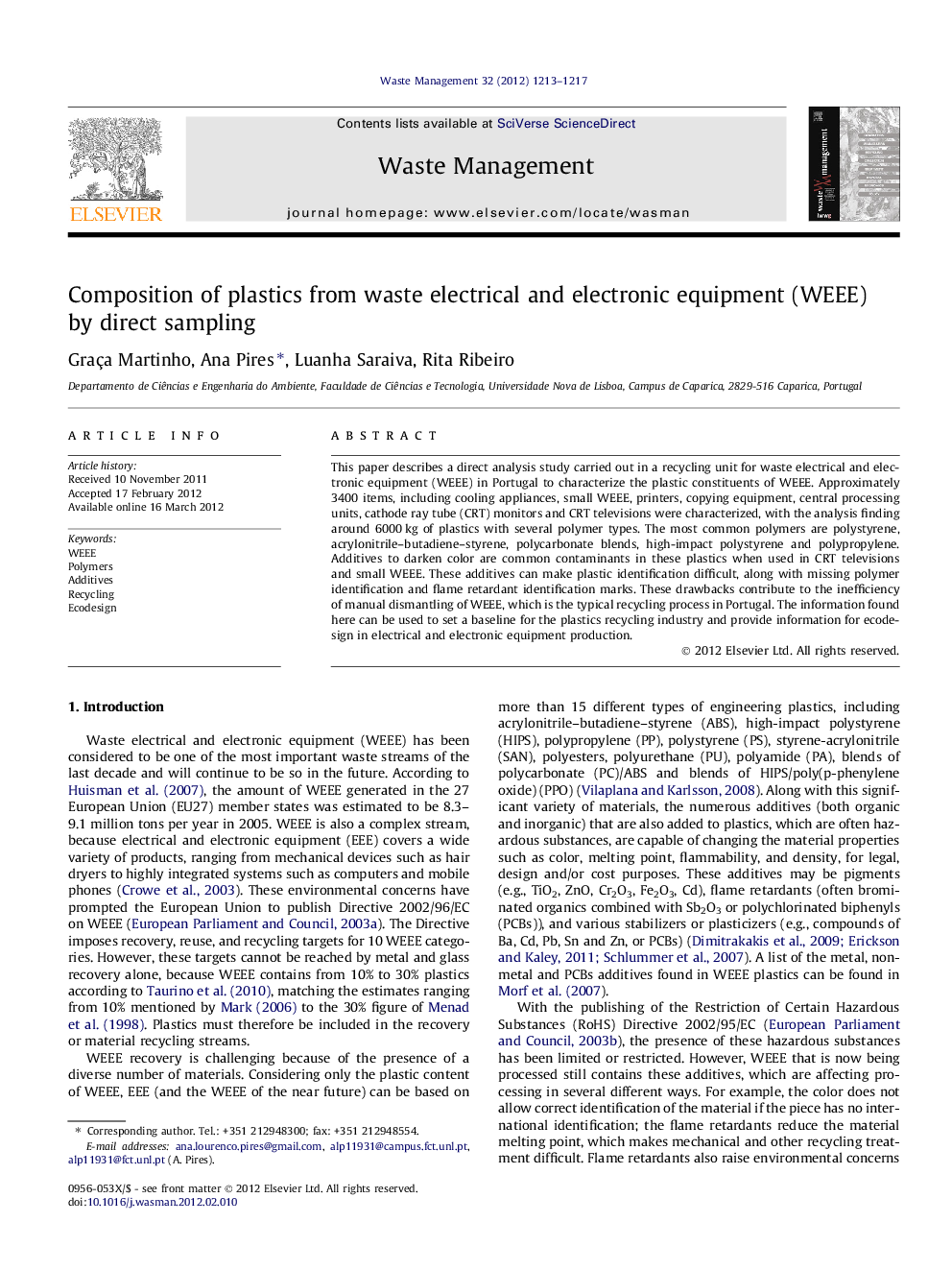| Article ID | Journal | Published Year | Pages | File Type |
|---|---|---|---|---|
| 4471810 | Waste Management | 2012 | 5 Pages |
This paper describes a direct analysis study carried out in a recycling unit for waste electrical and electronic equipment (WEEE) in Portugal to characterize the plastic constituents of WEEE. Approximately 3400 items, including cooling appliances, small WEEE, printers, copying equipment, central processing units, cathode ray tube (CRT) monitors and CRT televisions were characterized, with the analysis finding around 6000 kg of plastics with several polymer types. The most common polymers are polystyrene, acrylonitrile–butadiene–styrene, polycarbonate blends, high-impact polystyrene and polypropylene. Additives to darken color are common contaminants in these plastics when used in CRT televisions and small WEEE. These additives can make plastic identification difficult, along with missing polymer identification and flame retardant identification marks. These drawbacks contribute to the inefficiency of manual dismantling of WEEE, which is the typical recycling process in Portugal. The information found here can be used to set a baseline for the plastics recycling industry and provide information for ecodesign in electrical and electronic equipment production.
► The article shows WEEE plastics characterization from a recycling unit in Portugal. ► The recycling unit has low machinery, with hand sorting of plastics elements. ► Most common polymers are PS, ABS, PC/ABS, HIPS and PP. ► Most plastics found have no identification of plastic type or flame retardants. ► Ecodesign is still not practiced for EEE, with repercussions in end of life stage.
